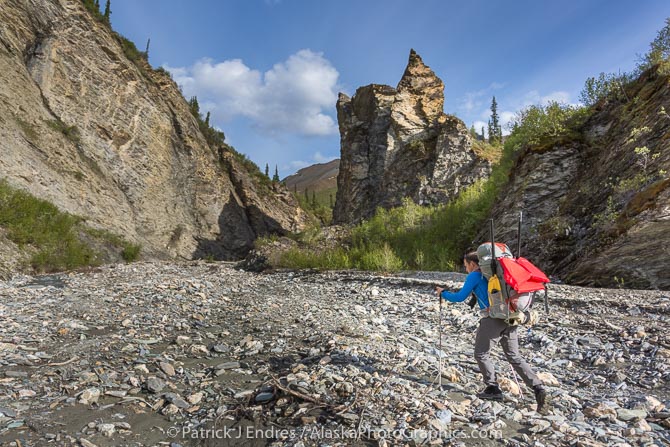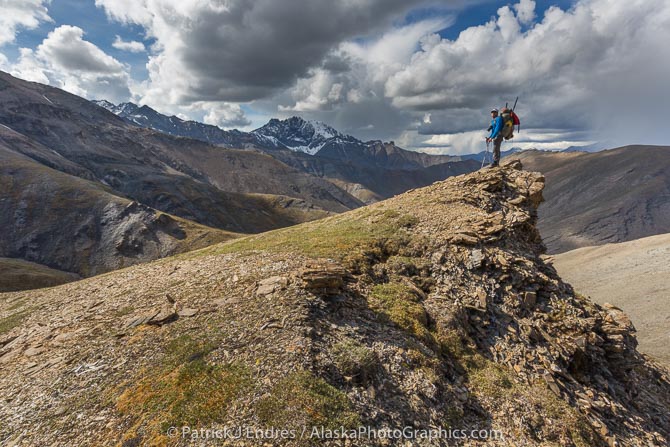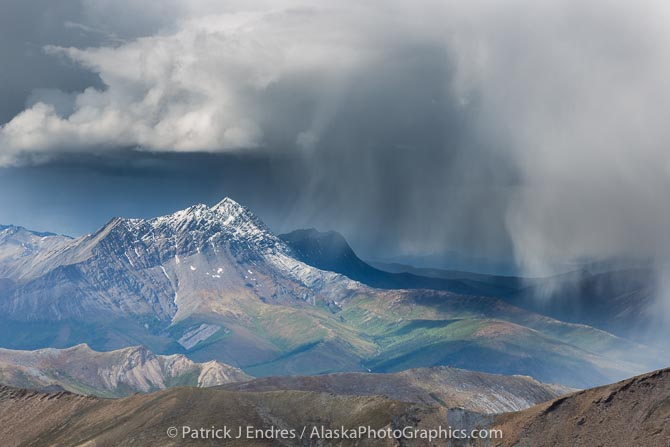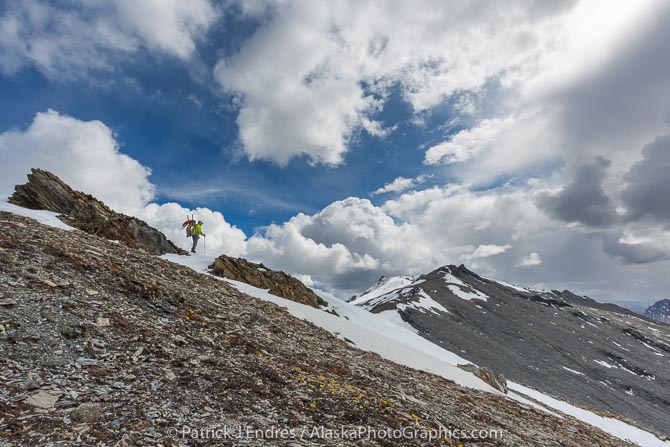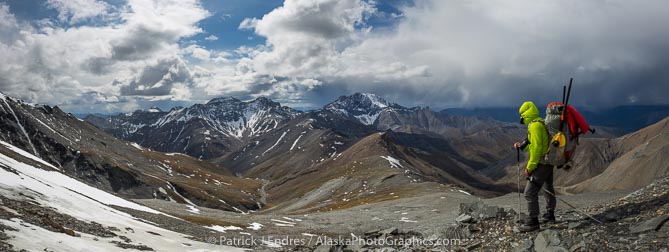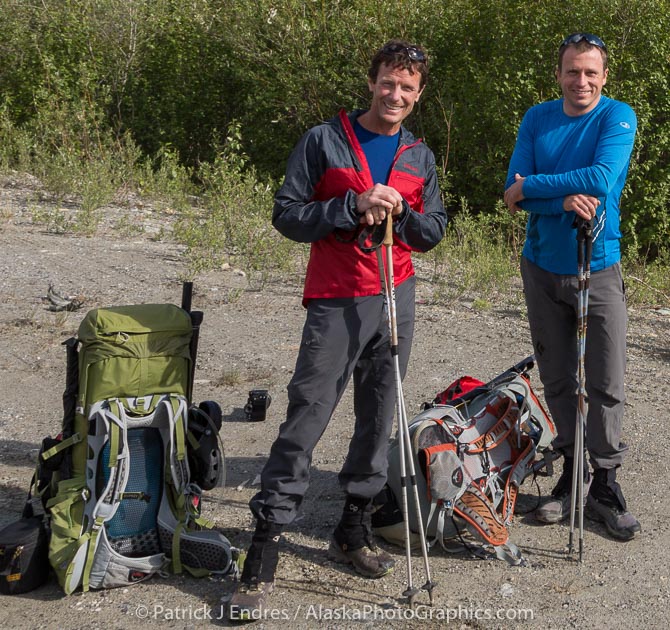
There is a window of time in Alaska’s early summer where one can get out and explore after the snow has melted, but before the waves of mosquitoes emerge. It is a narrow time frame, and in the Southern Brooks Range mountains, it is usually before June 15. But the change in seasons is still in process at this time, and winter may still have a few cold breaths to blow over the mountains. This was the case during my recent venture to backpack, packraft and photograph along a few rivers in the southeastern Brooks Range. In addition to fluctuating weather and temperatures during this time of year, water levels can vary considerably as well. Snow melt and precipitation can alter the flow of a small river significantly.
A friend and I made a 50 mile backpack & packraft (and due to low water-a lot of lining the boats) trip east of the Dalton highway along the Matthews river. A very early warm spell in late May helped melt the snow in the high country, but this also meant low water in the river. While I would prefer to raft, rather than line a boat through shallow water, the clear water found in the absence of abundant runoff is worth the trade off. The crystal clear water has a mesmerizing quality, and to peer through it to the river rocks below is a sort of soul-food. It reminds me of a quote from Norman Maclean’s book, A River Runs Through It.
“Eventually, all things merge into one, and a river runs through it. The river was cut by the world’s great flood and runs over rocks from the basement of time. On some of the rocks are timeless raindrops. Under the rocks are the words, and some of the words are theirs. I am haunted by waters.”
Adding the process of photography to a trip like this is consistently challenging. I find this true for a number of reasons.
- The first being that it takes a fair amount of energy just in the process of moving, hiking, climbing and navigating, not to mention having the extra time and energy to create compelling images.
- Camera gear adds weight to an already hefty pack that includes all the necessary gear for pack rafting (paddle, pfd, dry suit, dry gear, raft, etc.)
- In addition, this time of year can be wet and chilly. Cold, wet hands erode my motivation quickly.
- Getting in and out of a boat to find a perspective other than water level also takes time and energy.
Every veteran photographer learns that the weather can be a friend or foe, and sometimes both simultaneously. But this is all part of the lure, the paradox that often comes with adventuring in mountain country: the extremes of weather, the views from high places, the arduous work of getting there, and the route finding along unknown pathways.
I took my Canon 5D Mark III with the 16-35mm f/4L IS and the 24-105mm f/4L IS. One lens would simplify things and omit the need to change lenses in rainy and wet conditions, but I can’t seem to go anywhere without at least a 16mm wide lens. There is nothing like capturing the sky in such epic places. I left the tripod behind, but that was largely due to weight, since my pack was already about 52lbs.
The trip began on foot, trekking up a drainage and over a mountain pass. Here are a few images prior to reaching the river.
